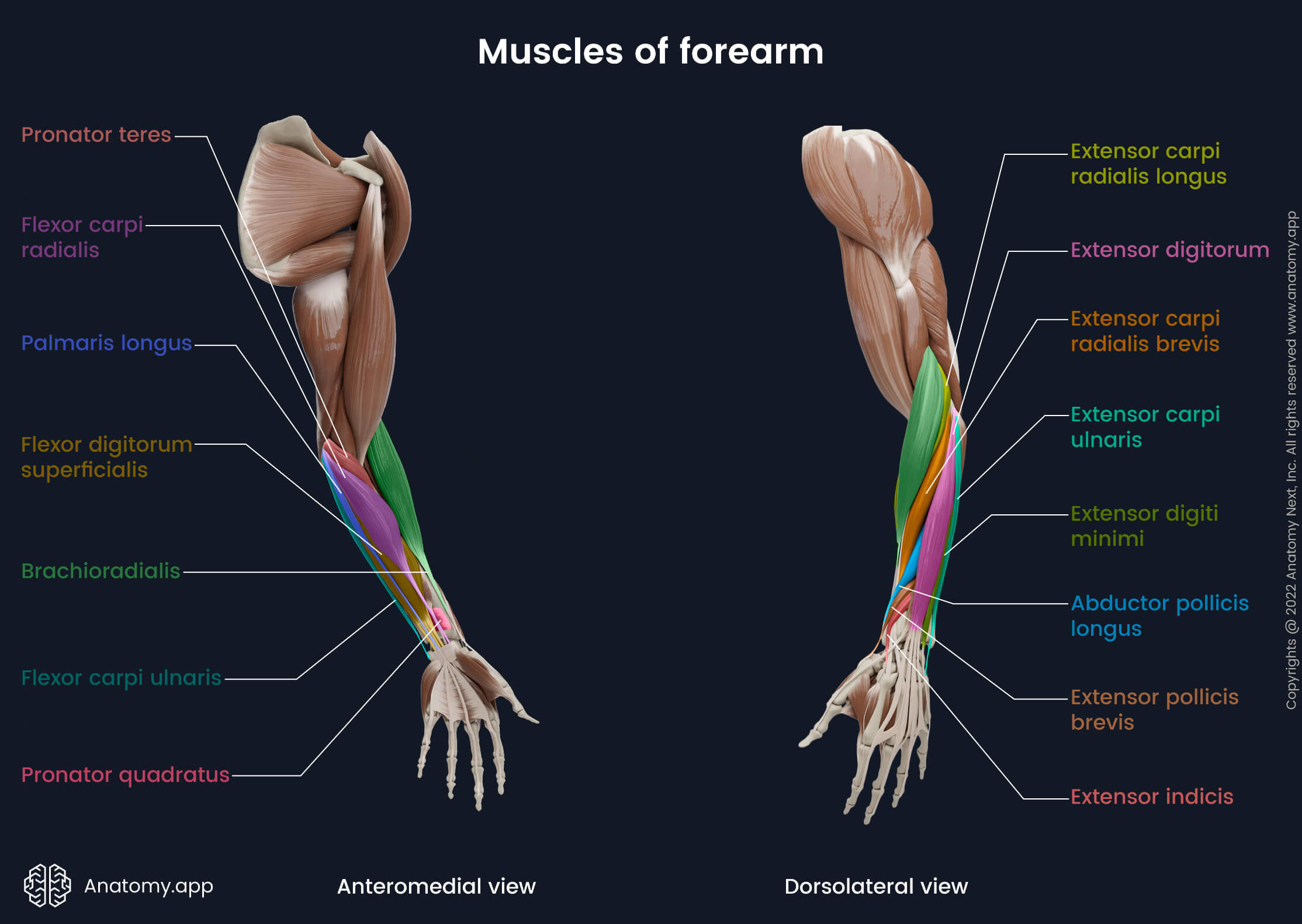- Anatomical terminology
- Skeletal system
- Joints
- Muscles
- Head muscles
- Neck muscles
- Muscles of upper limb
- Muscles of pectoral girdle
- Muscles of shoulder region
- Muscles of upper arm
- Muscles of forearm
- Anterior compartment
- Lateral compartment
- Posterior compartment
- Muscles of hand
- Thoracic muscles
- Muscles of back
- Muscles of lower limb
- Heart
- Blood vessels
- Lymphatic system
- Nervous system
- Respiratory system
- Digestive system
- Urinary system
- Female reproductive system
- Male reproductive system
- Endocrine glands
- Eye
- Ear
Palmaris longus
The palmaris longus (Latin: musculus palmaris longus) is a long and relatively flat superficial muscle of the upper limb that extends between the humerus and hand. It is classified as the wrist flexor and one of the anterior muscles of the forearm. The palmaris longus lies in the first, most superficial layer of the anterior compartment.
| Palmaris longus | |
| Origin | Medial epicondyle of humerus |
| Insertion | Palmar aponeurosis, distal aspect of flexor retinaculum |
| Action | Flexion of wrist, tension of palmar aponeurosis |
| Innervation | Median nerve (C7, C8) |
| Blood supply | Anterior ulnar recurrent and median arteries |

Origin
The palmaris longus muscle originates from the medial epicondyle of the humerus.
Insertion
As the palmaris longus descends, it forms a flattened tendon that crosses over the flexor retinaculum and inserts in the palmar aponeurosis. Also, tendon fibers merge with the distal one-half of the flexor retinaculum.
Action
The primary function of the palmaris longus muscle is the flexion of the wrist. It also aids in the tension of palmar aponeurosis.
Innervation
The palmaris longus is innervated by the median nerve (C7, C8) - a branch of the brachial plexus.
Blood supply
The palmaris longus muscle receives arterial blood supply from the anterior ulnar recurrent artery, which is a branch of the ulnar artery.